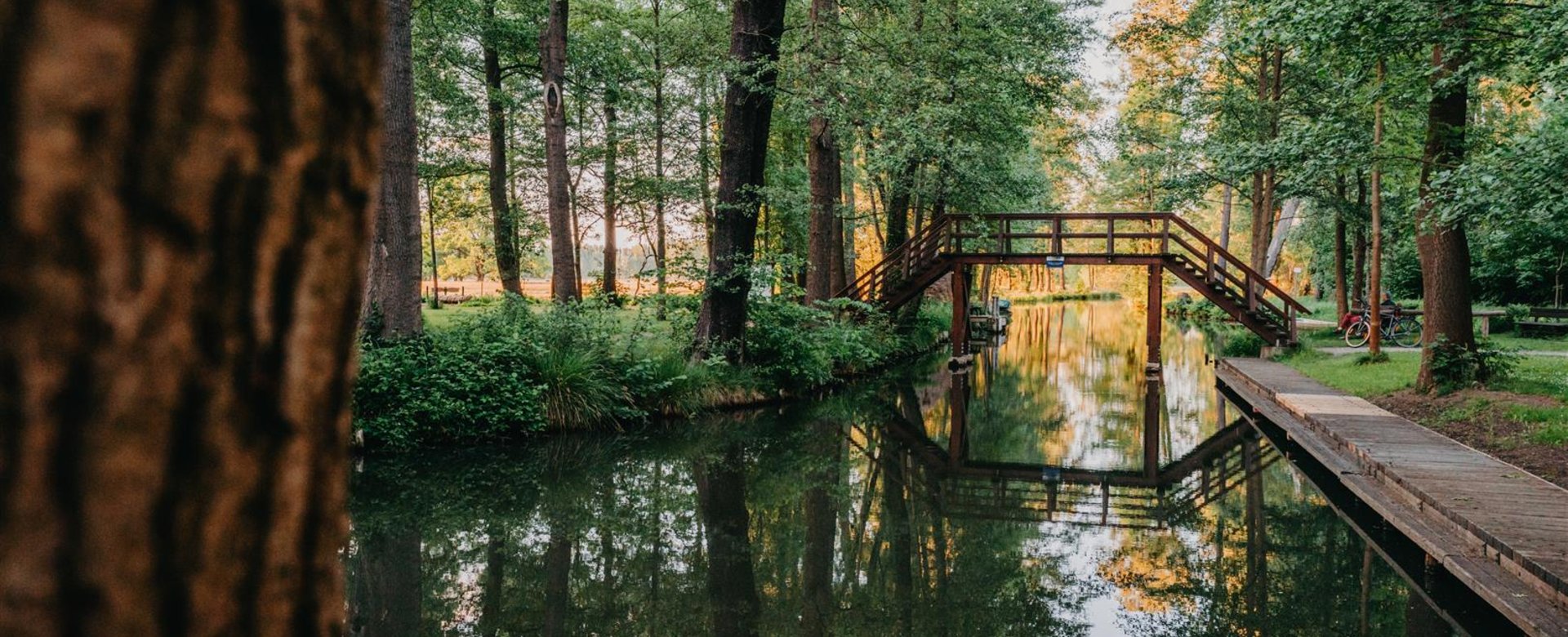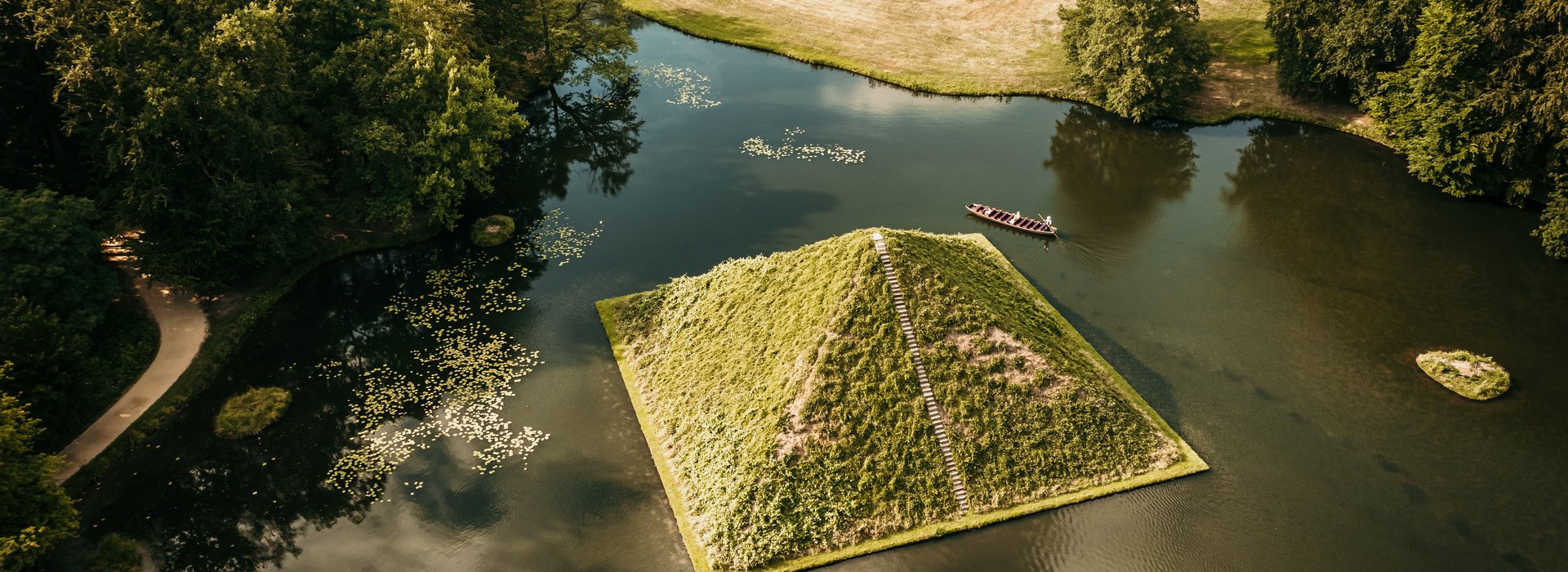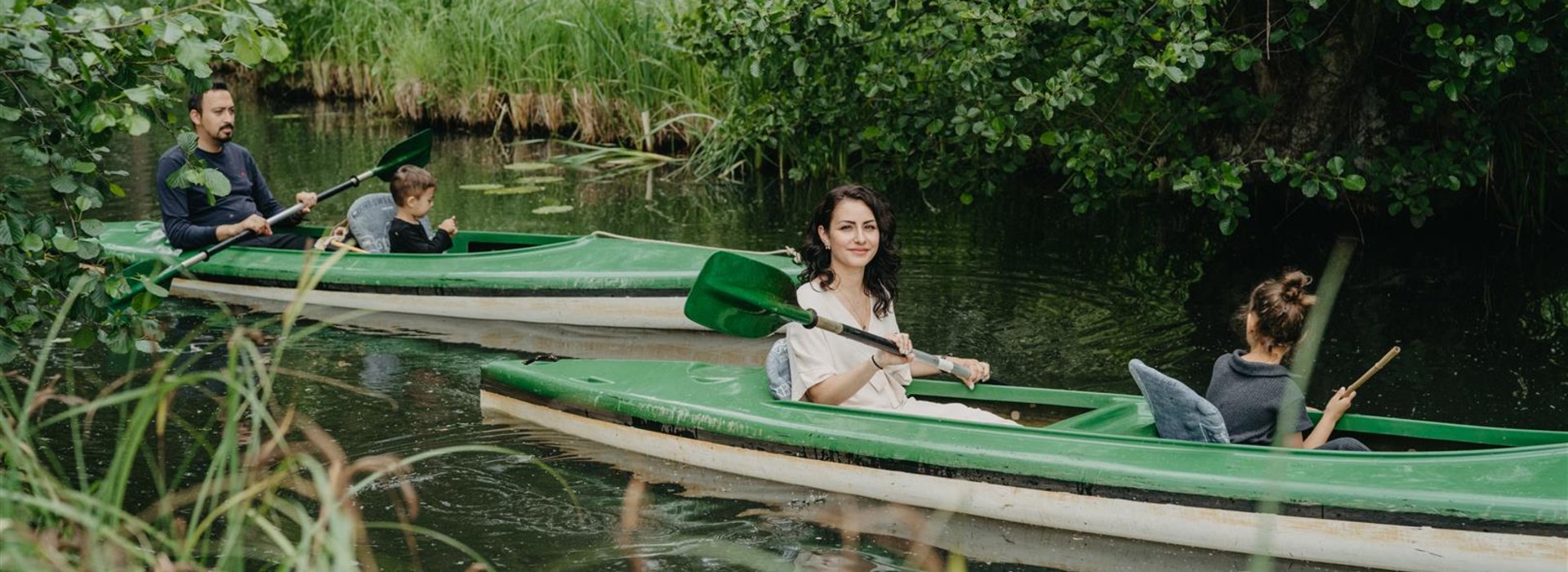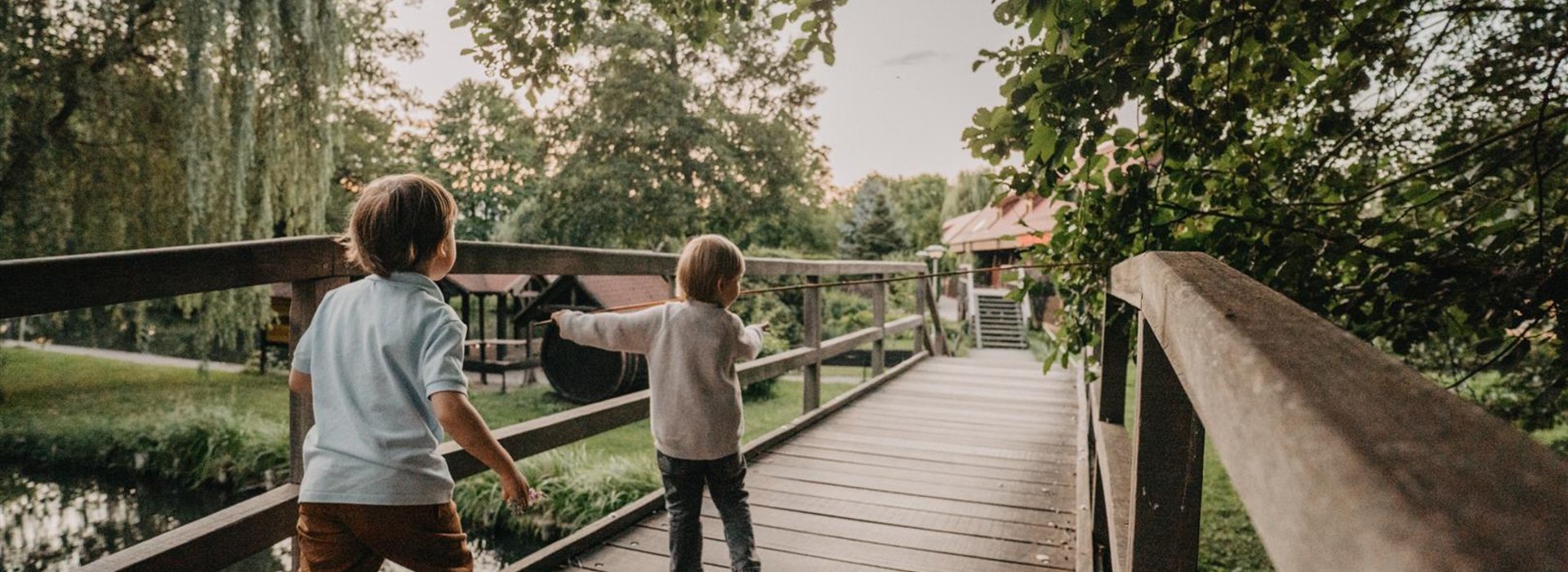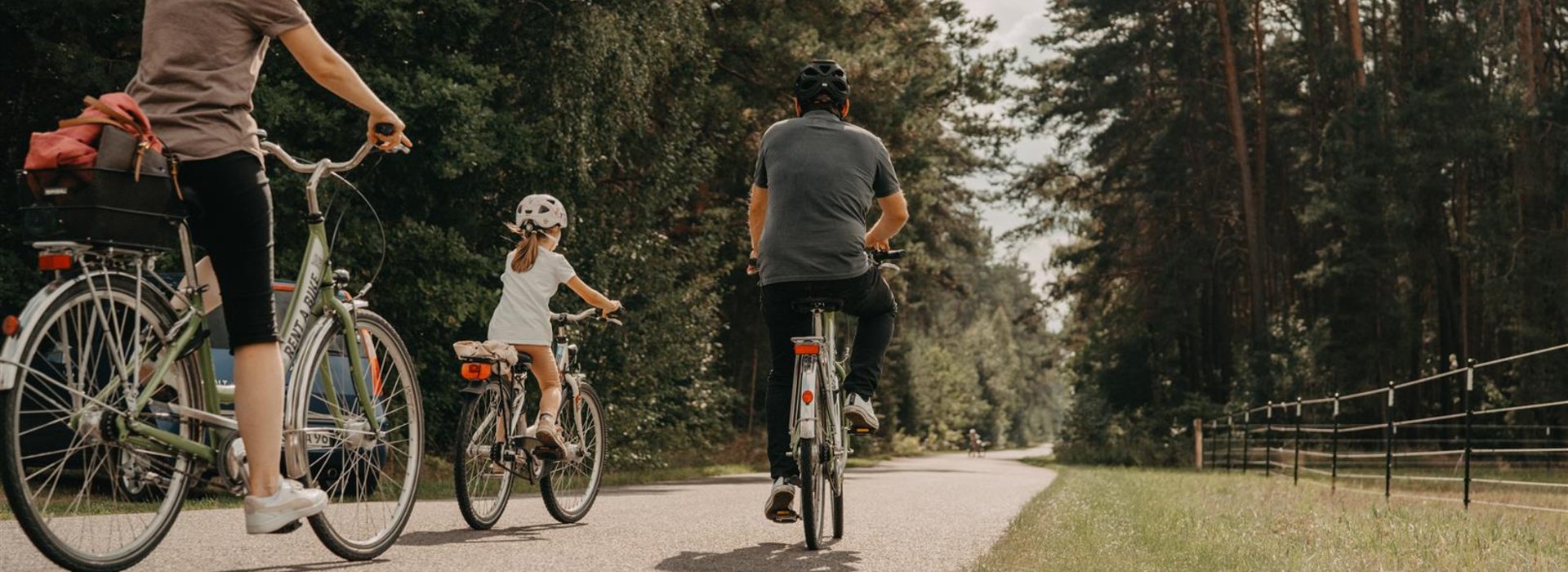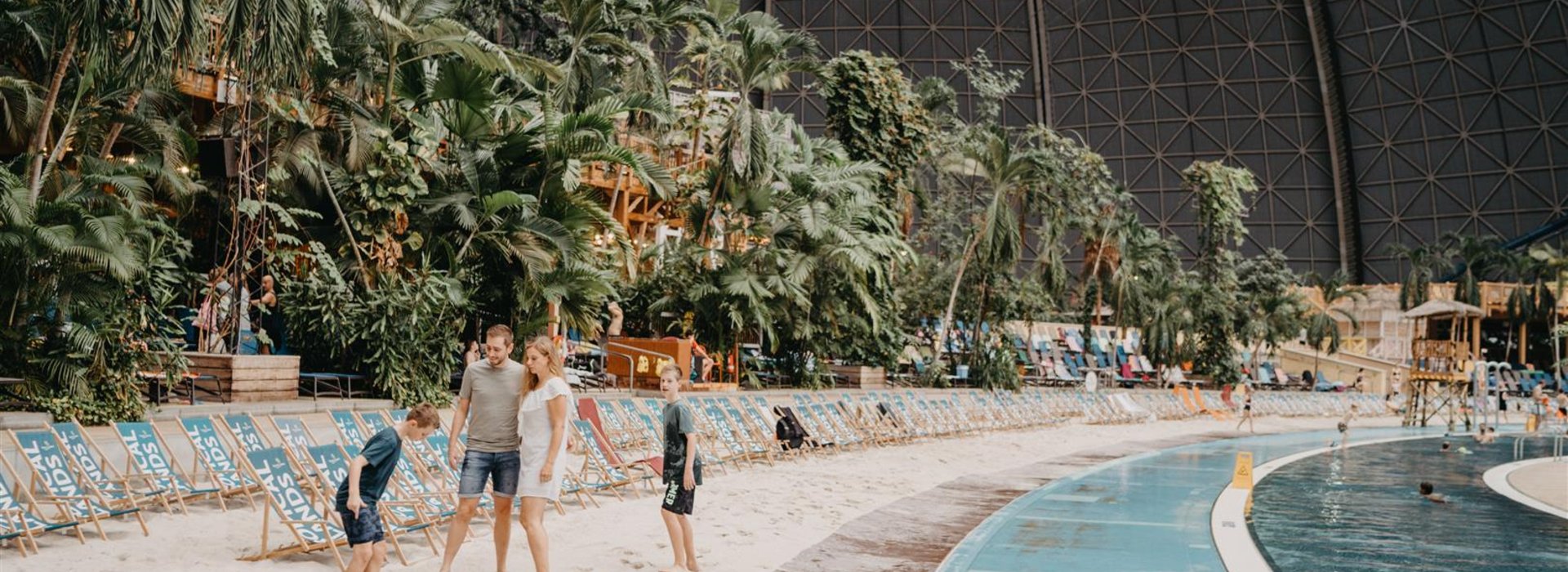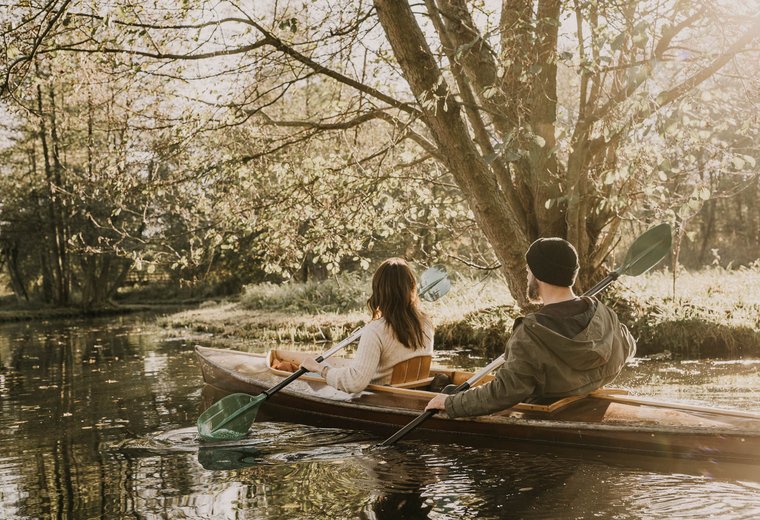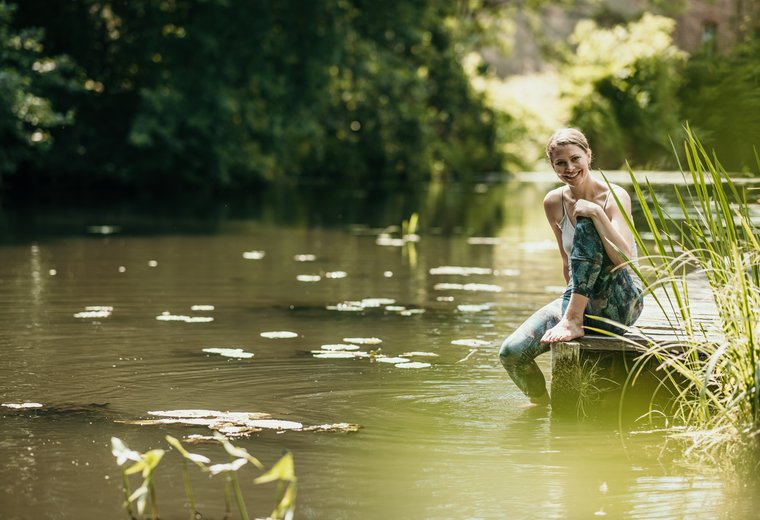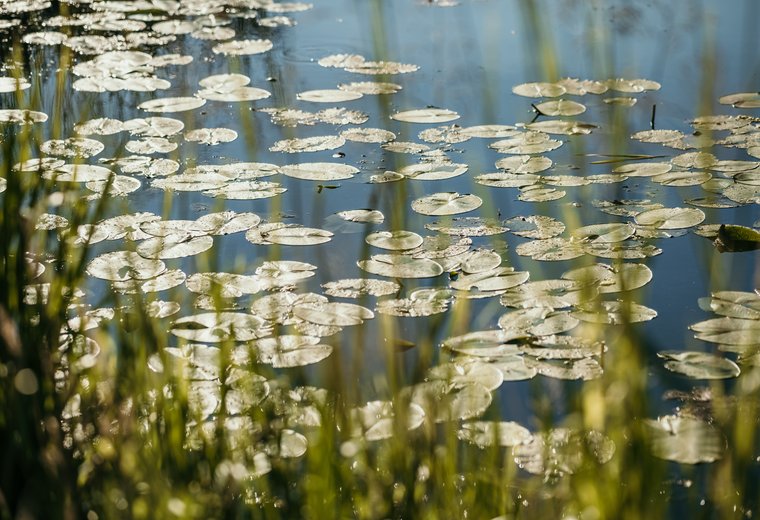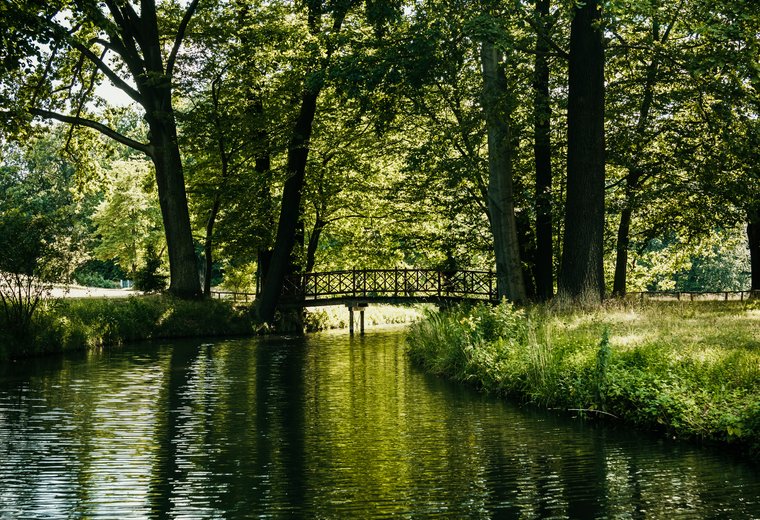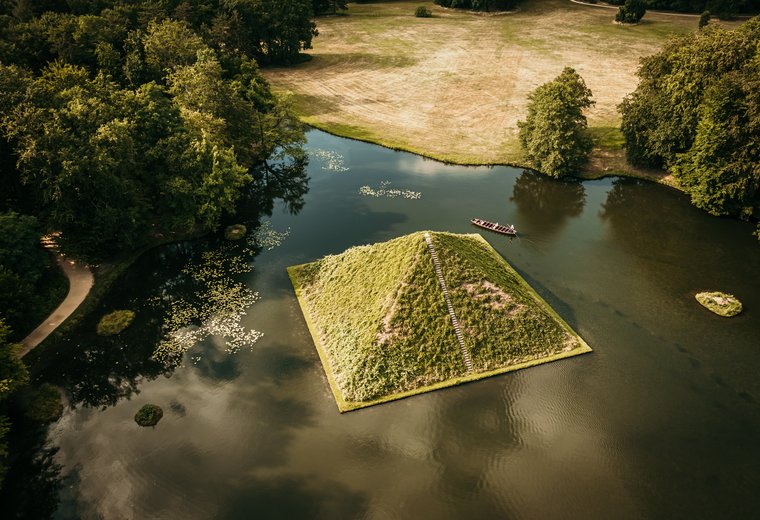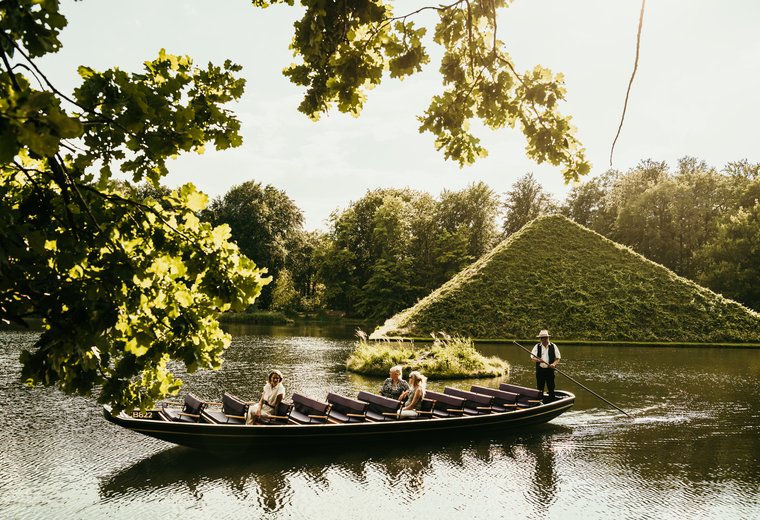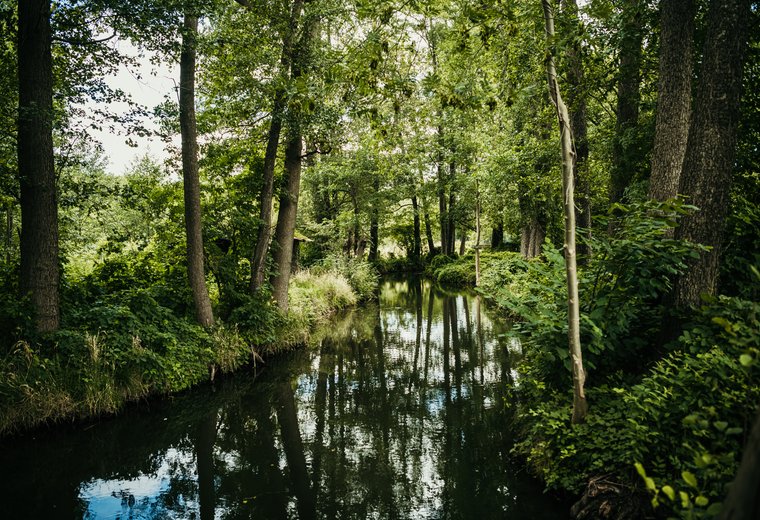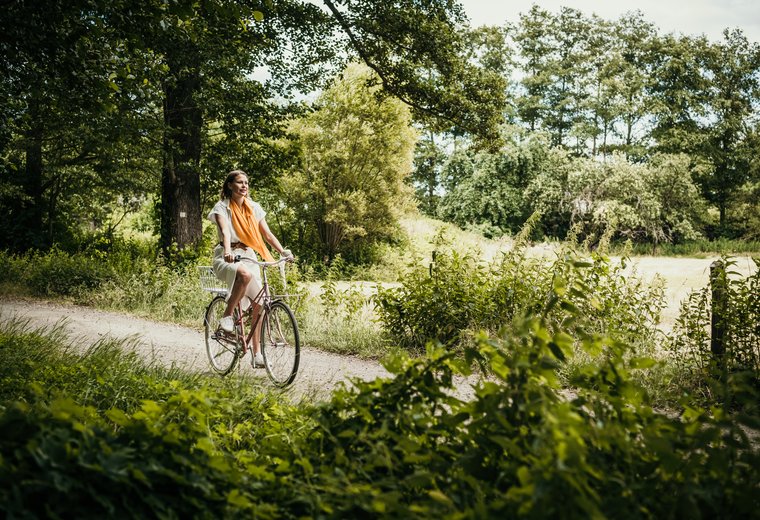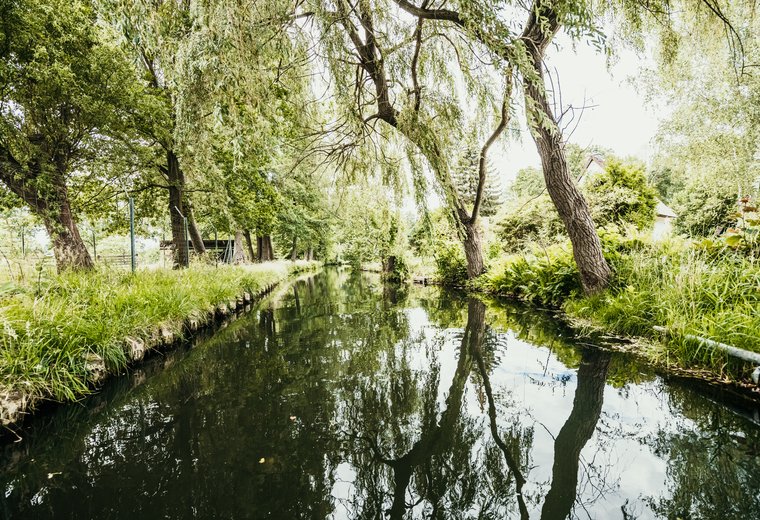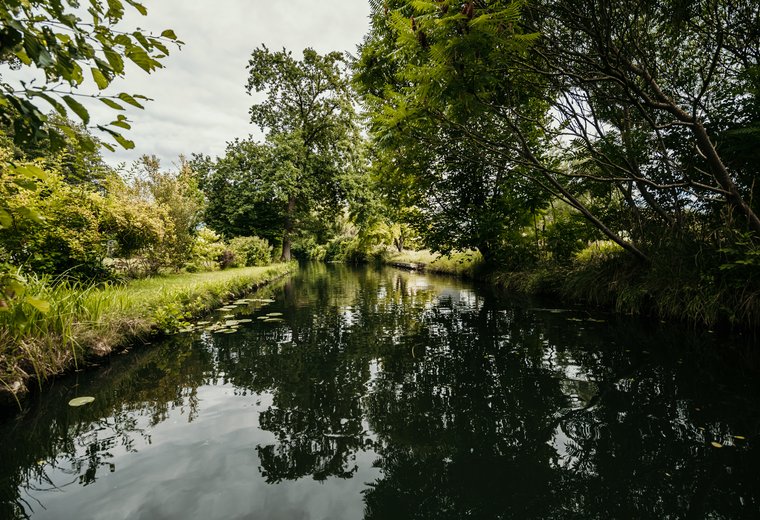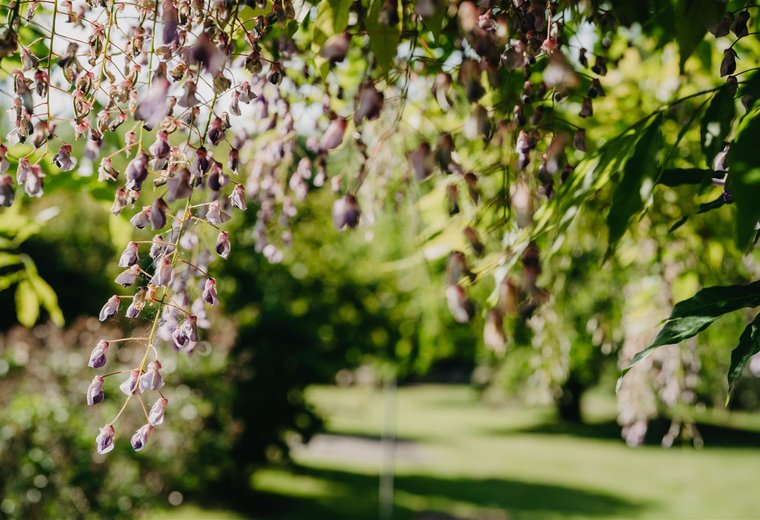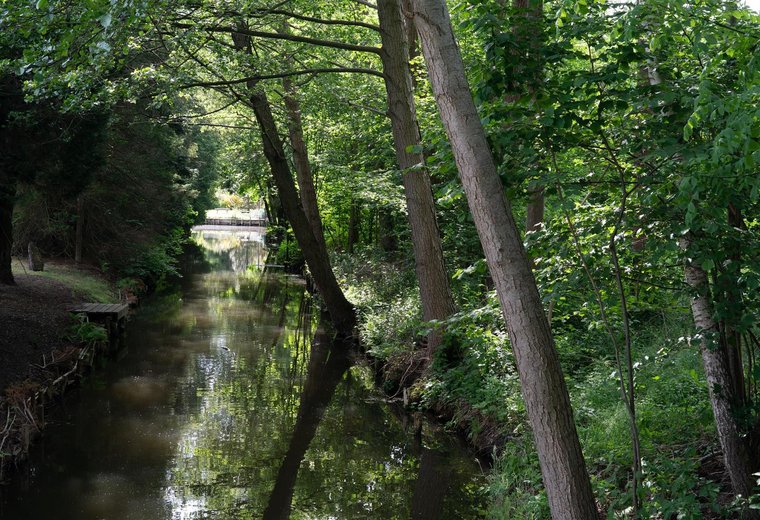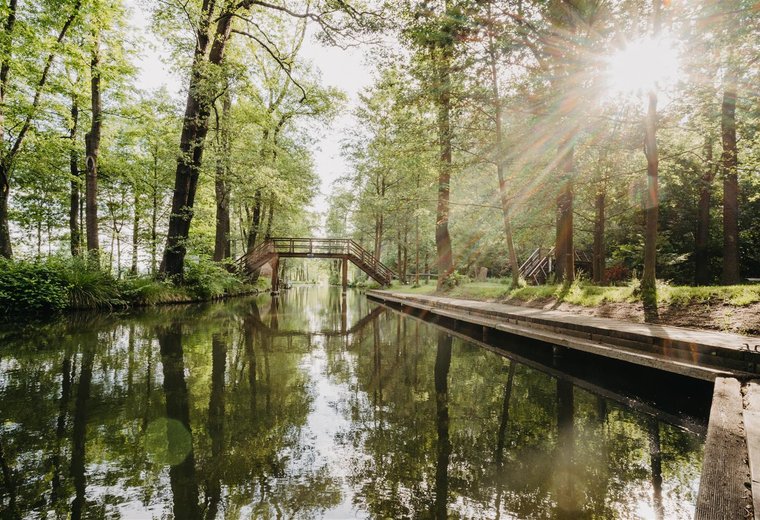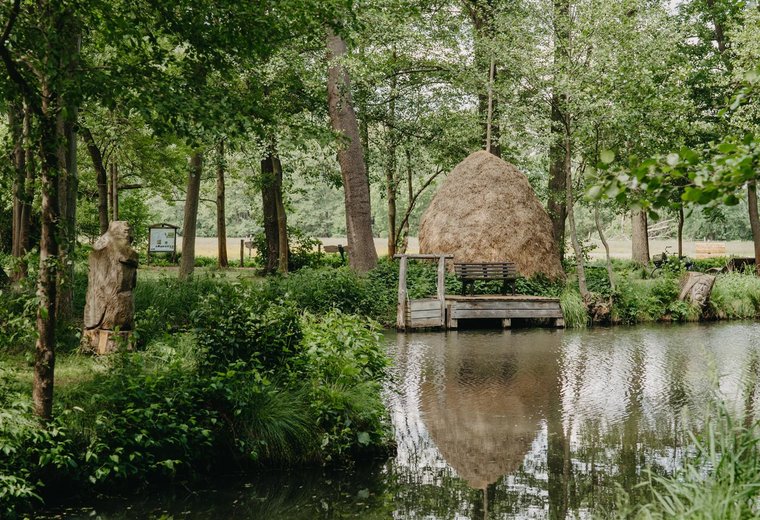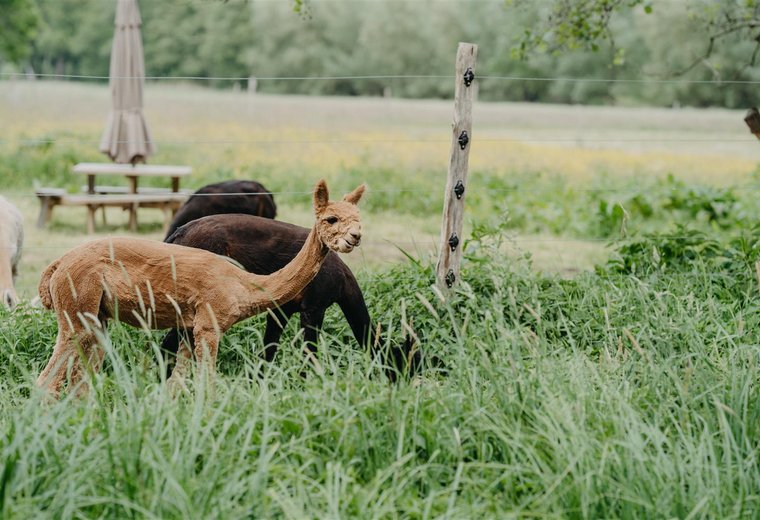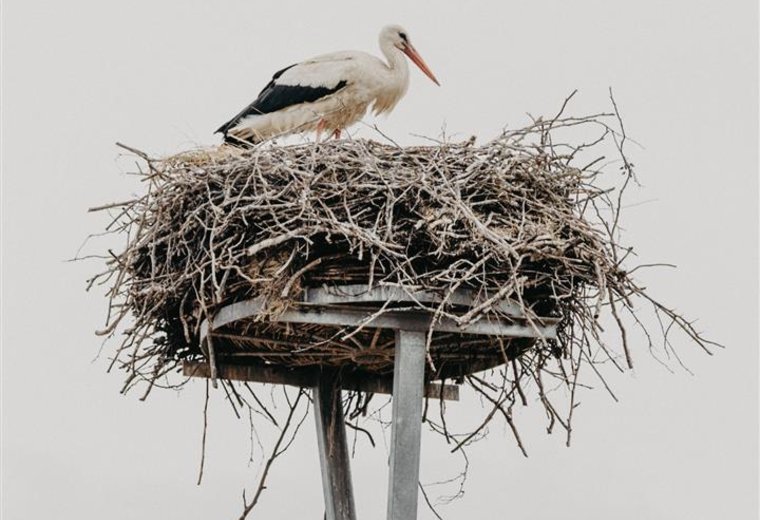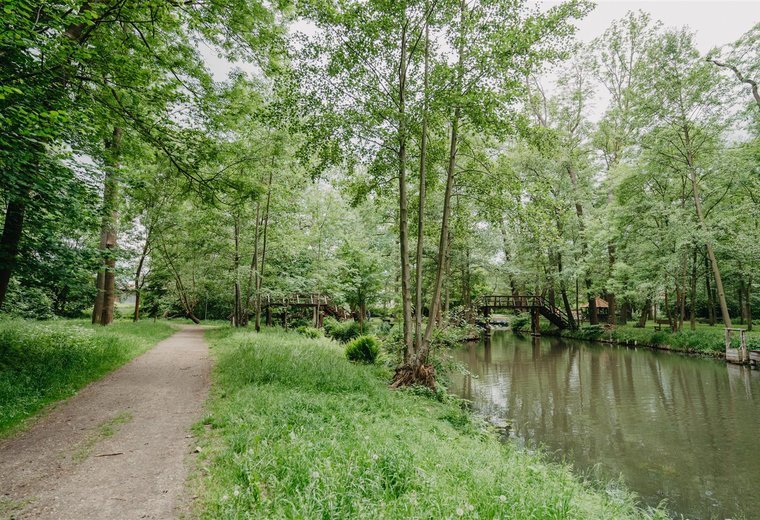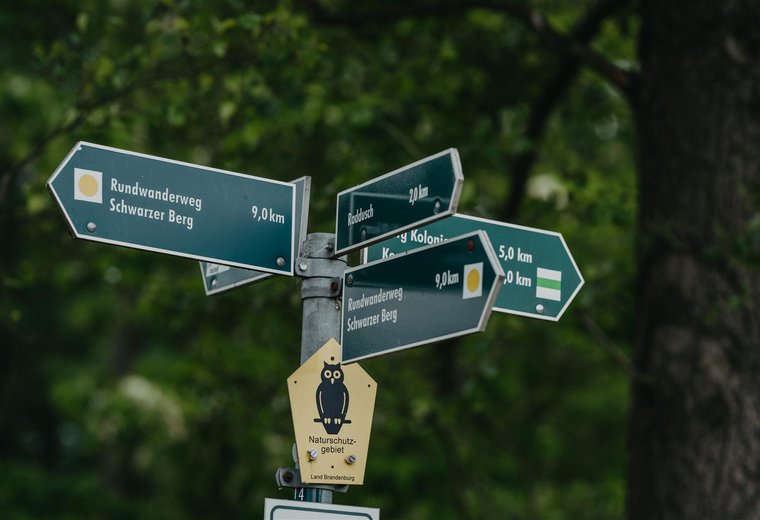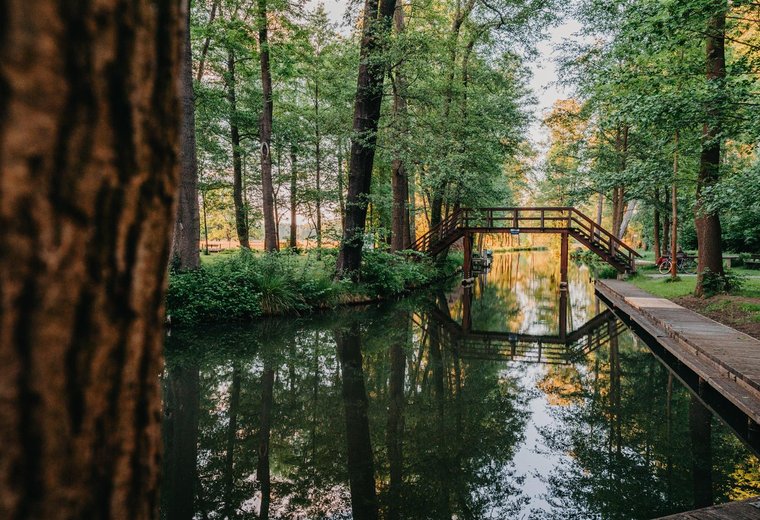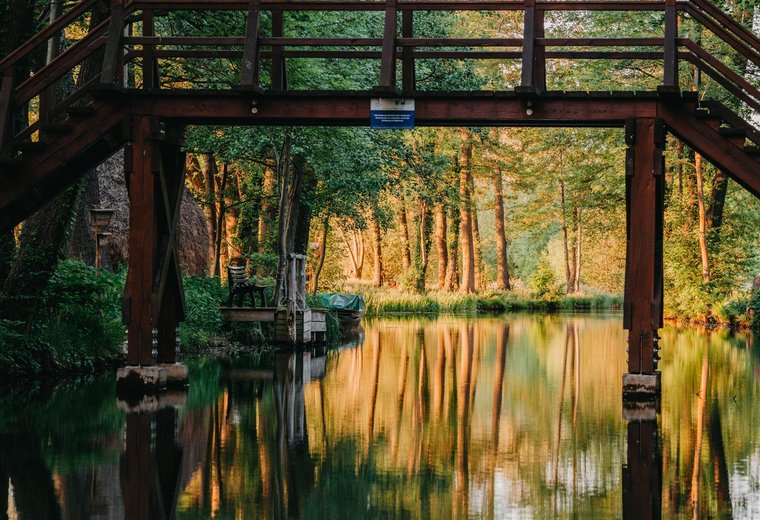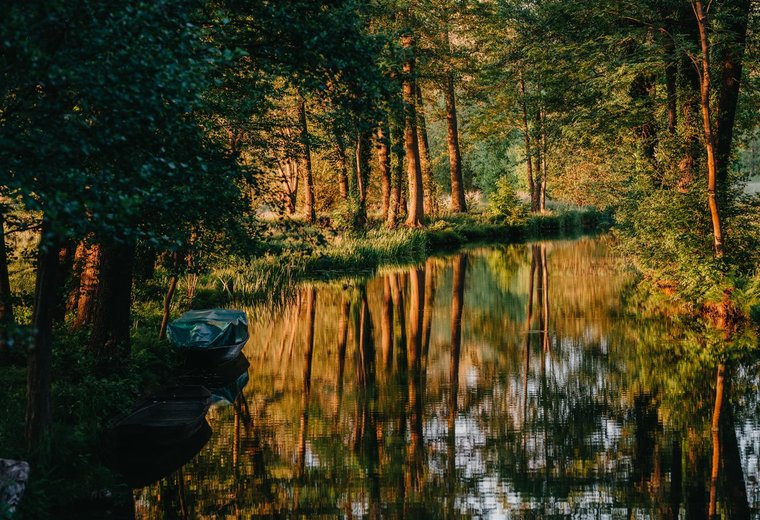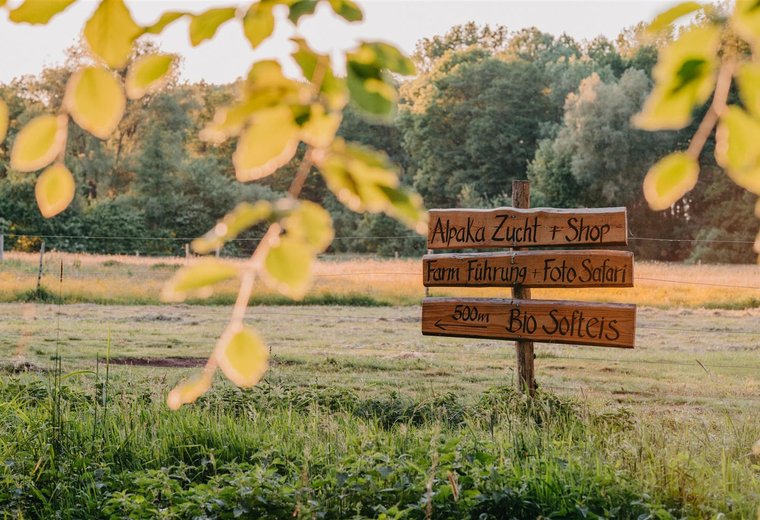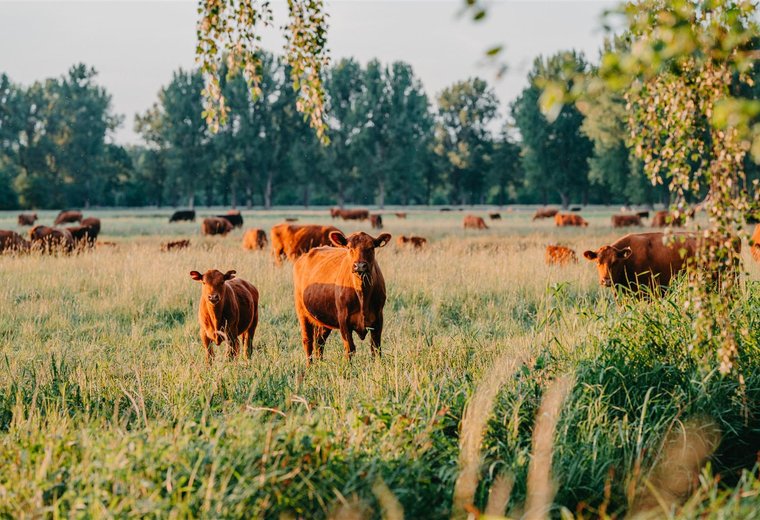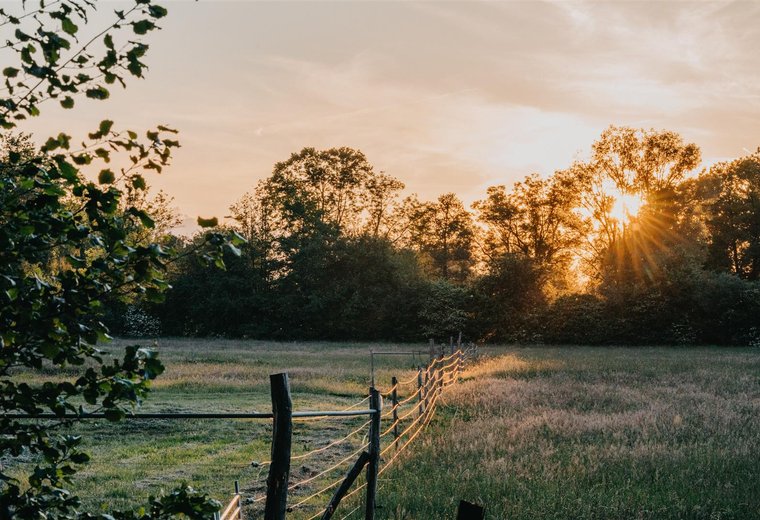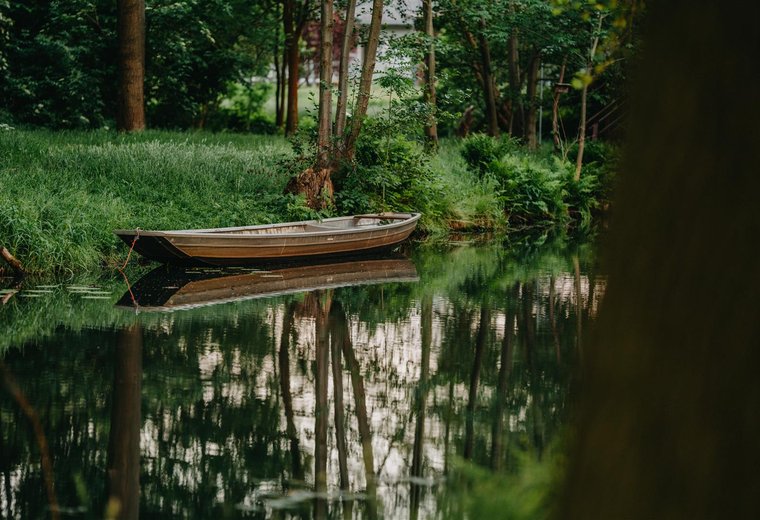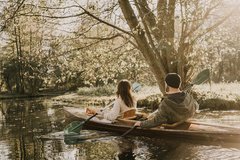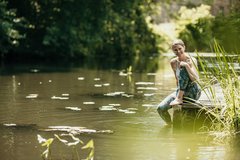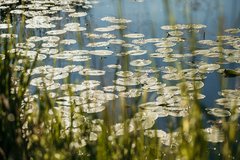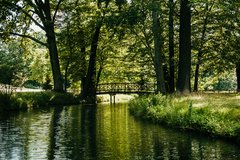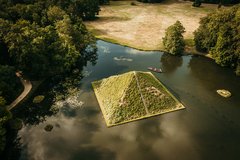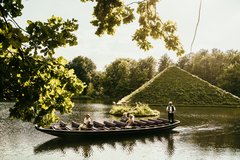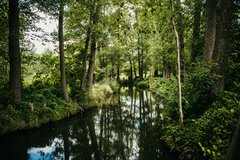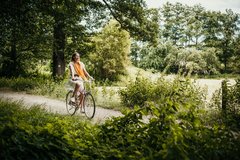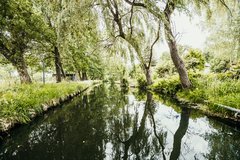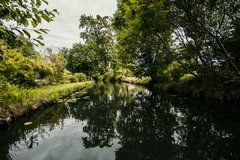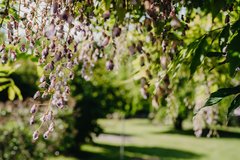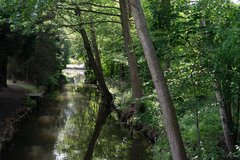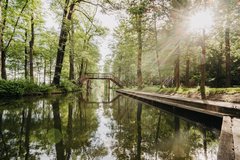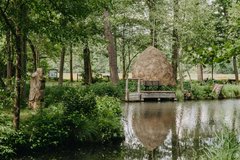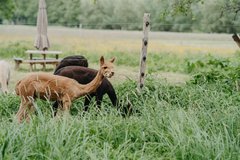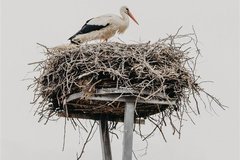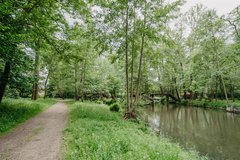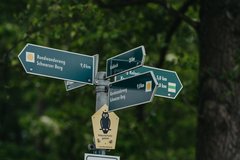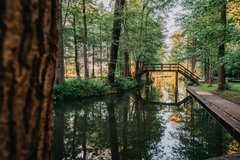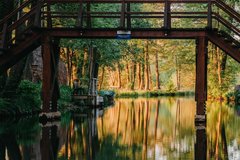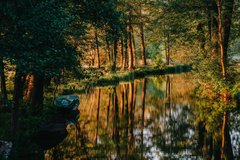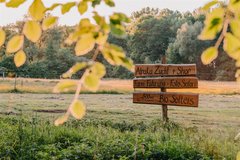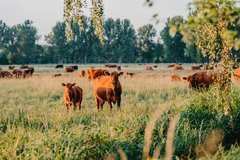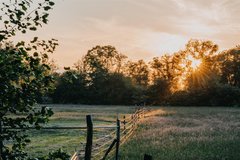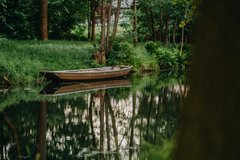Active Experiences in the Spreewald
Discover the unique nature of the Spreewald individually in a canoe or paddle boat, hike and explore the natural landscapes on one of the countless hiking trails or enjoy the idyllic landscape on a relaxing trip in a Spreewald punt.
The beauty of the so-called rivers, the widely branching water network, invites especially water hikers to extensive pleasure: paddling, barge and canoe trips, everything can be enjoyed here to your heart's content. Let nature inspire you!
Punting in the Spreewald
Since time immemorial, barges have served the Spree Forests as a means of transport for crops, livestock and mail. That's why almost every village and homestead has its own landing stage. You should allow about two to three hours for a boat trip, special themed boat trips can also take longer. With your personal boatman, you will pass picturesque Spreewald villages, peaceful meadows and imposing forests. You will learn exciting facts about sights, traditions and customs and be treated to Spreewald gherkins and bread.
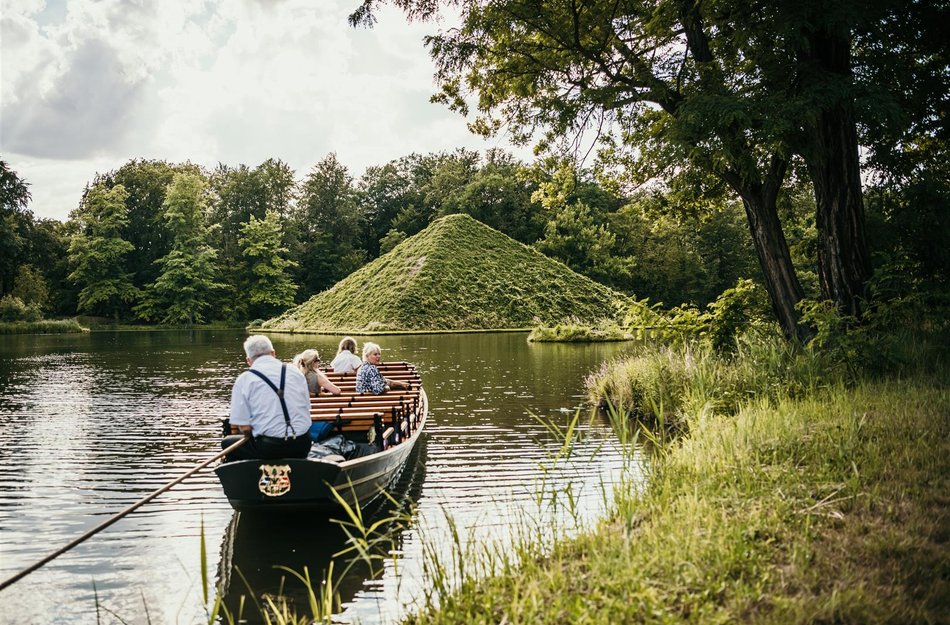
Canoeing or paddling in the Spreewald
Discover the Spreewald on a canoe tour and paddle past idyllic houses, hand-operated locks and under romantic bridges. No matter where you start your paddle tour through the Spreewald, we will give you an overview of boat rental companies in Burg, Lübbenau & Co.
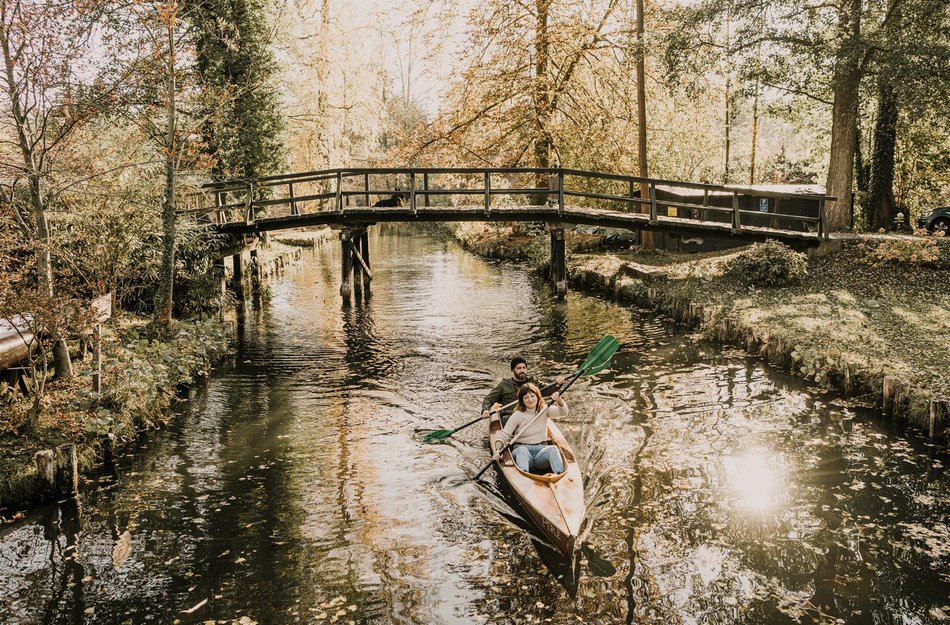
Cycling in the Spreewald
Explore the entire Spreewald by bike and enjoy a unique natural and cultural landscape. Cycle past romantic rivers and blue lakes, right through a unique floodplain landscape in the UNESCO Spreewald Biosphere Reserve. You can enjoy nature in the Spreewald in an adventurous and relaxed way. Plan your next holiday in the Sp reewald with a bike tour right away!
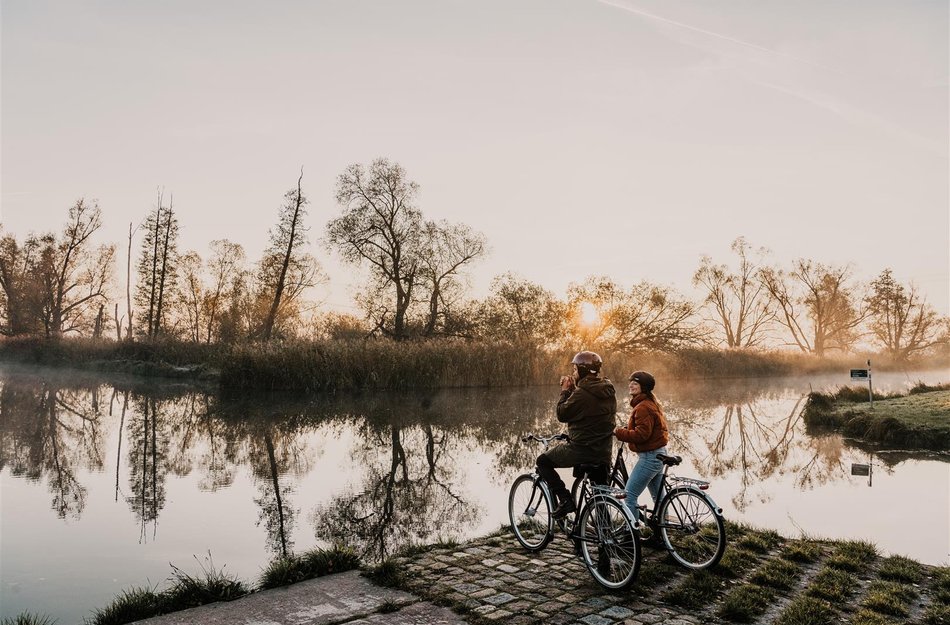
If you are going on an excursion, please be sure to have the hiking trail maps of the Foundation's areas in your luggage and please only walk on the areas designated therein. Nature and adventure trails also run through the Leichhardt Land around the Small and Large Mochow Lakes, focusing on nature and cultural tourism aspects. On the one hand, you can deepen your knowledge of the animals and plants that live here, and on the other hand, you can gain rich insights into the work of the important naturalist Ludwig Leichhardt. Snake, deer, crane, otter and beaver each have their own trail dedicated to them. On paths between two and eight kilometres long, young and old can follow the tracks of the local fauna together.
Species such as wolves, otters, beavers, white-tailed eagles and the eastern green lizard live in the heaths, dunes, moors, lakes and forests of the Lieberos Heath Nature World. Many rare insects and plants such as the bearberry are also found here. 80 percent of the area is now a nature reserve in the form of flora-fauna habitats or bird sanctuaries. More about nature conservation in the Spreewald here.
Hike in the unique nature of the Spree Forest
Nature lovers and hiking enthusiasts will find plenty of inviting options in the idyllic Lower Spree Forest. One of them is the "Buchenhain" nature trail near Schlepzig. On the way is the seven-metre high nature observation tower "Wussegk", from which you can let your gaze wander extensively over the flowing landscape. The Spree and Quaasspree cross here, while further west the Wussegk Stream branches off from the Quaasspree. A great introduction to exploring nature discovery trails is the "Hupatz" trail in Burg, which is about one kilometre long. Small experience stations along the largely barrier-free path enable visitors to come into direct contact with the natural landscape of the UNESCO biosphere reserve. The path is named after a typical inhabitant of the scattered settlement: the hoopoe. In the Spreewald it is also called Hupatz. The hoopoe is particularly affected by cool, damp weather and the intensification of agriculture, so that its population must be protected.

